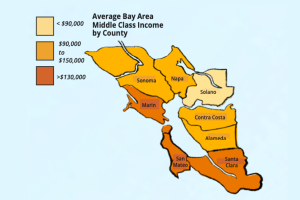ACT program prepares for return to campus
Lynbrook’s ACT program is returning to school on the week of April 19.
March 17, 2021
Lynbrook’s Academic Community Transition (ACT) program is returning to school after a challenging transition to online learning. The students who choose to return to campus in the week of April 19 can finally look forward to more hands-on activities and interactive learning.
The ACT program focuses on teaching vocational and community skills to students who choose not to complete the traditional A-G requirements for a high school diploma. Some, but not all, of the students have learning disabilities, and all ACT students earn a certificate rather than a diploma upon completing four years at Lynbrook. Since most of the skills taught in the class, like riding a bus, require face-to-face interaction, teaching can be difficult through a computer screen.
“These students are the most needy students in the school, and they need all the support and guidance that you can deliver to a person,” ACT teacher David Herz said. “It’s really difficult to do this over Zoom. Their needs are so great that there’s been a big focus on getting them back.”
In order to adapt to remote learning, the ACT program’s entire curriculum had to be overhauled. The program resorted to YouTube videos, online field trips and virtual interactions to continue teaching their curriculum. Skills like buying movie tickets and purchasing items from stores can be difficult to emulate in an online setting. Instructors can only guide the students verbally, which is often insufficient for learning.
Other issues also compounded the program’s challenges. Students are often unable to attentively sit in front of a computer for the duration of the school day, and parents typically need to look after their student during class. Once students return to campus, ACT teachers will be able to guide students in an environment more suited to students’ needs; while in person, instructors can do less talking and more physical guiding through hand gestures, rather than struggling to verbally get students’ attention through a computer screen.
“We just need to get everyone back because to do the things we do, it has to be in-person, as it is very difficult to simulate students online,” Herz said. “Especially when it comes to vocational tasks, we’re just talking about it, not actually practicing it.”
Although the plans for the transition back into a physical classroom are not set in stone, teachers hope the program will be similar to traditional years. Specifics, like the number of students to return at a time, in addition to health and safety protocols like masks and social distancing are currently under discussion.
After facing challenges in distance learning, many are glad to return to school despite the restrictions that remain. Aware of the many complications that may accompany the return, the program leaders look forward to providing their students with the necessary opportunities to thrive in the community.
“I’m nervous that the students may have a hard time transitioning away from their comfortable environments at home,” ACT teacher Jen Larson said. “We’re doing our best to plan for everything, and I’m so excited.”




























































